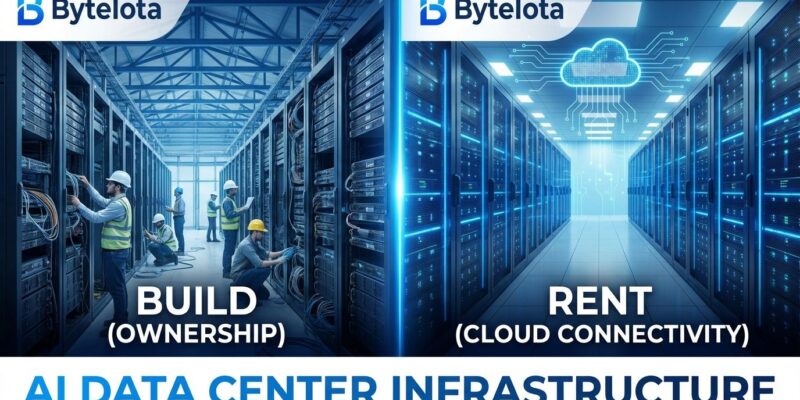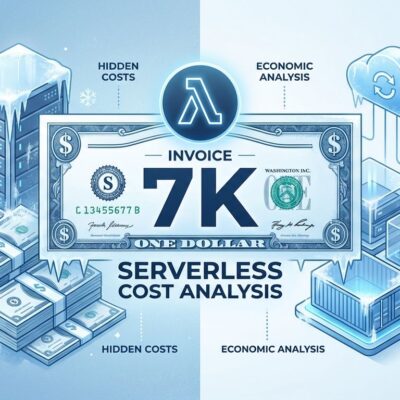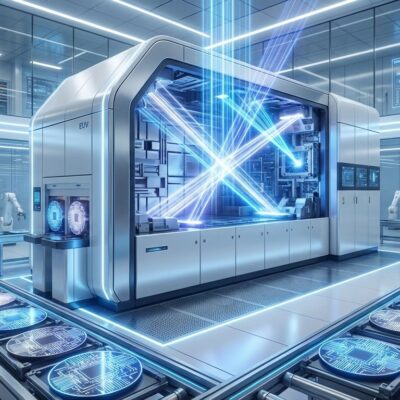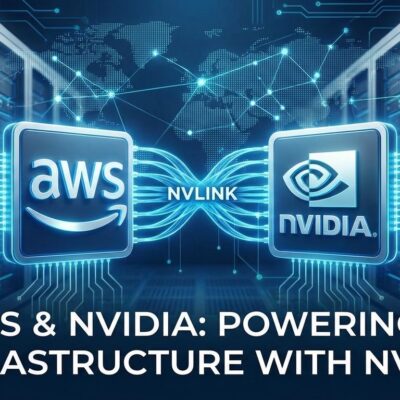
Anthropic just made the biggest bet in AI infrastructure history: $50 billion to build its own data centers across the U.S., starting with custom facilities in Texas and New York. While OpenAI locked up $38 billion in rented AWS GPUs just days ago, Claude’s creator is taking the opposite path—building infrastructure it owns. Two AI giants, two radically different strategies for scaling to AGI. The question isn’t just which approach wins, but whether infrastructure ownership will become the defining competitive advantage in AI.
The Build vs Rent Divide
The AI infrastructure market is splitting into two camps, and the divergence is striking. Anthropic announced $50 billion to build custom data centers in partnership with Fluidstack, a UK-based AI cloud platform. Not AWS. Not Azure. Not Google Cloud. Anthropic is building infrastructure it will own outright, optimized specifically for Claude’s workloads.
Meanwhile, OpenAI’s $38 billion AWS partnership takes the opposite approach: rent hundreds of thousands of NVIDIA GB200 and GB300 GPUs through Amazon EC2 UltraServers. OpenAI got immediate access to cutting-edge hardware. Anthropic will wait until 2026 for its first facilities to come online.
Anthropic is betting infrastructure ownership creates a competitive moat, like Amazon’s AWS before it. OpenAI is betting speed and flexibility matter more than control. Both are $50 billion-scale bets on AI’s future. Only one strategy can be right.
Why Anthropic Is Building – The Economics
At Anthropic’s scale, the economics of ownership start making brutal sense. The company hit $5 billion in annual recurring revenue by August 2025, up from $1 billion at the start of the year. It’s projecting $9 billion by year-end, targeting $20-26 billion by 2026, and expects $70 billion in revenue by 2028. With 300,000 businesses using Claude and 80% of revenue coming from enterprise customers, this isn’t speculative demand. It’s sustained, proven traction.
When you’re running AI inference and training at that scale, GPU rental costs explode. High-end H100 GPUs rent for $3-8 per hour on major cloud providers. At $3 per GPU-hour, spending $5 billion annually means running roughly 190,000 H100s continuously. That’s rental cost forever—no equity, no long-term control. Anthropic’s $50 billion over 20 years works out to $2.5 billion annually, a manageable fraction for a company projecting $20-70 billion in revenue.
The timing matters too. Anthropic is building after proving product-market fit, not before. Startups rent GPUs to experiment. At $5 billion ARR with economics of owning versus renting GPU infrastructure tipping decisively toward ownership, Anthropic has the scale to justify the bet. And ownership brings more than cost savings—it brings independence. No cloud vendor lock-in. No competition for capacity during GPU shortages. Infrastructure tuned specifically for Claude’s architecture.
If you’re spending $1-5 billion per year renting GPUs, $50 billion to own infrastructure starts looking smart.
The AWS Precedent – Why This Playbook Works
Anthropic isn’t inventing this strategy. Amazon did it two decades ago. In the early 2000s, Amazon was an e-commerce company struggling with scale. Every new project took three months just to provision infrastructure—databases, compute, storage—before engineers could write a single line of application code. Teams built their own resources from scratch with no reuse or standardization.
Amazon’s infrastructure team, led by Tom Killalea, built internal systems to solve this. By 2003, they realized their infrastructure expertise could be a product. Amazon built AWS from internal infrastructure needs, launching S3 in March 2006 and EC2 in August 2006. AWS didn’t just save Amazon money—it became the company’s most profitable business. Companies that rented from AWS lost strategic control. Amazon gained a competitive advantage that compounds year after year.
Anthropic is following the same playbook. Build infrastructure for internal needs (Claude), gain deep expertise, and infrastructure ownership becomes a long-term moat. The parallel isn’t perfect—Amazon had first-mover advantage in cloud; Anthropic is competing with established players. But AWS proves infrastructure ownership can create outsized value. Amazon didn’t just save money by building AWS—they created an entirely new business. Anthropic’s $50 billion bet may be setting up the same play.
The Risks – Why This Could Fail
A $50 billion infrastructure bet isn’t without massive risks. Anthropic’s $50 billion commitment represents 14.3% of its $350 billion valuation—a huge capital lockup. That’s money that could fund R&D, acquisitions, or product expansion. It’s betting the company that AI infrastructure demands will remain stable and predictable for years.
Technology risk looms large. GPU architectures evolve rapidly. NVIDIA’s GB200 and GB300 are cutting-edge today, but what about 2027? Owned infrastructure is harder to upgrade than rented capacity. If next-generation chips require fundamentally different data center designs, Anthropic could be stuck with expensive, obsolete facilities. OpenAI, renting from AWS, can pivot to new hardware immediately.
Utilization risk is real too. Can Anthropic fill $50 billion of capacity as it builds? If growth slows or demand shifts, underutilized infrastructure becomes a costly anchor. OpenAI’s rental model scales down easily. Anthropic’s ownership doesn’t. And there’s a speed penalty: OpenAI got “immediate access” to AWS GPUs. Anthropic’s sites come online “throughout 2026.” Could Anthropic fall behind while building?
Finally, there’s an expertise gap. Running data centers requires skills Anthropic doesn’t specialize in. Partnering with Fluidstack suggests Anthropic doesn’t have full in-house expertise for infrastructure operations. Amazon had years of data center experience before launching AWS. Does Anthropic?
What if the AI landscape shifts in three years and Anthropic’s custom data centers become expensive anchors instead of competitive moats?
What This Means for AI Infrastructure
Anthropic’s $50 billion build validates a new infrastructure tier. By choosing Fluidstack over AWS, Azure, or Google Cloud, Anthropic proved specialized AI infrastructure providers can compete with hyperscalers. Fluidstack, which already supplies GPU clusters to Meta, Midjourney, and Mistral, just became a validated infrastructure partner for frontier AI companies.
This signals long-term AI expectations. $50 billion in infrastructure only makes sense if the AI frontier lasts 10-20 years. Anthropic isn’t betting on a hype cycle. It’s betting on sustained, multi-decade demand for frontier models. That’s a bullish signal for the entire industry.
We may be watching a two-tier market emerge: Infrastructure Builders like Anthropic versus Infrastructure Renters like most other AI companies. If Anthropic’s strategy succeeds, other well-funded AI companies will follow. Big Tech’s 2025 capital expenditures tell the same story—Amazon ($125 billion), Google ($91 billion), and Meta ($60 billion) are all pouring unprecedented capital into infrastructure. Anthropic’s $50 billion bet fits a broader pattern: infrastructure ownership is becoming existential for AI leaders.
For developers, this competition is good. More infrastructure means more GPU availability, eventually. Competition between builders and renters could drive down API costs and improve service reliability. Whether Anthropic or OpenAI wins the Build vs Rent debate, developers benefit from both paths being explored at scale.
If Anthropic ($350 billion valuation) is committing $50 billion to infrastructure, every AI company with serious ambitions is reconsidering their rental agreements.












